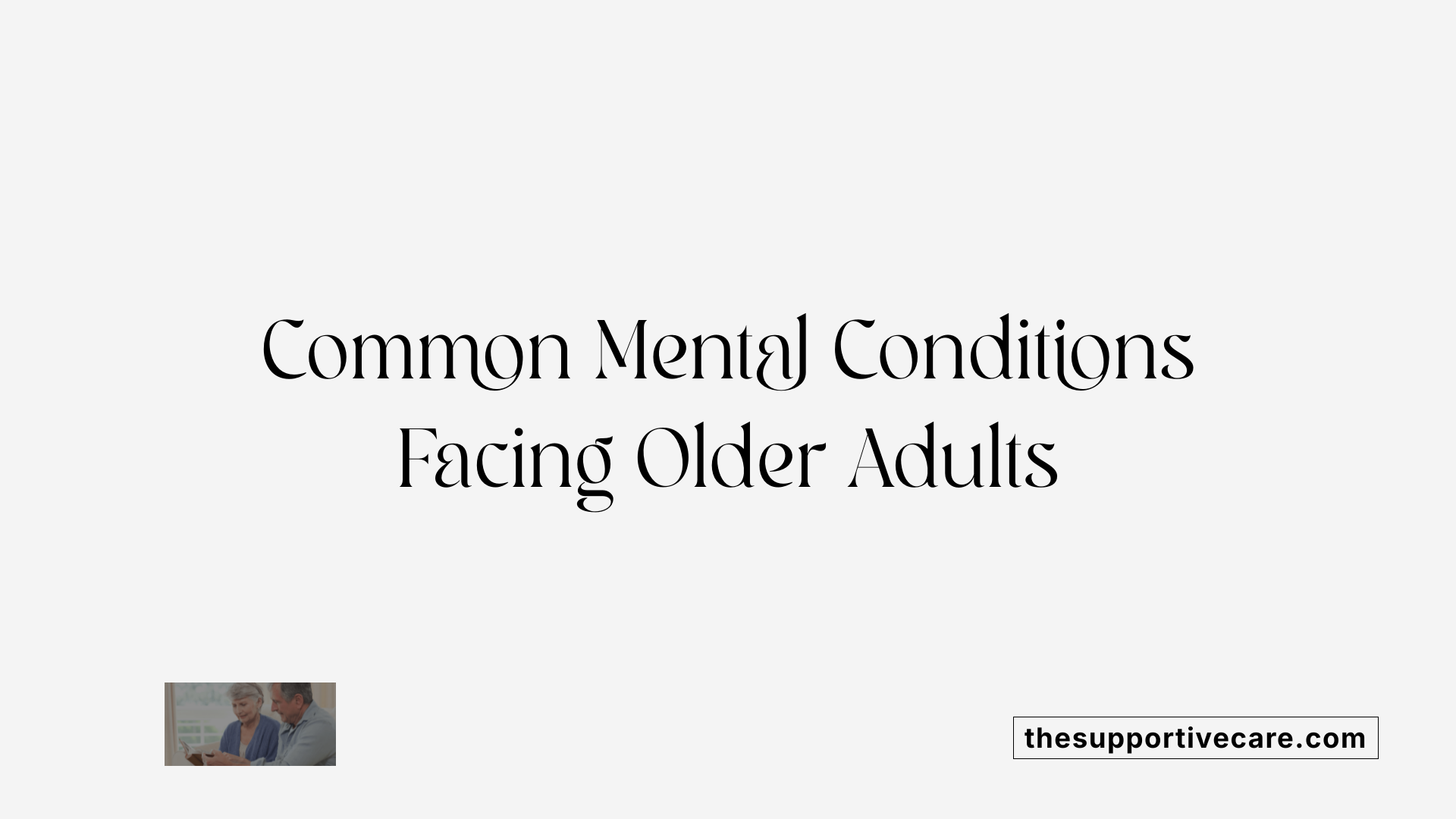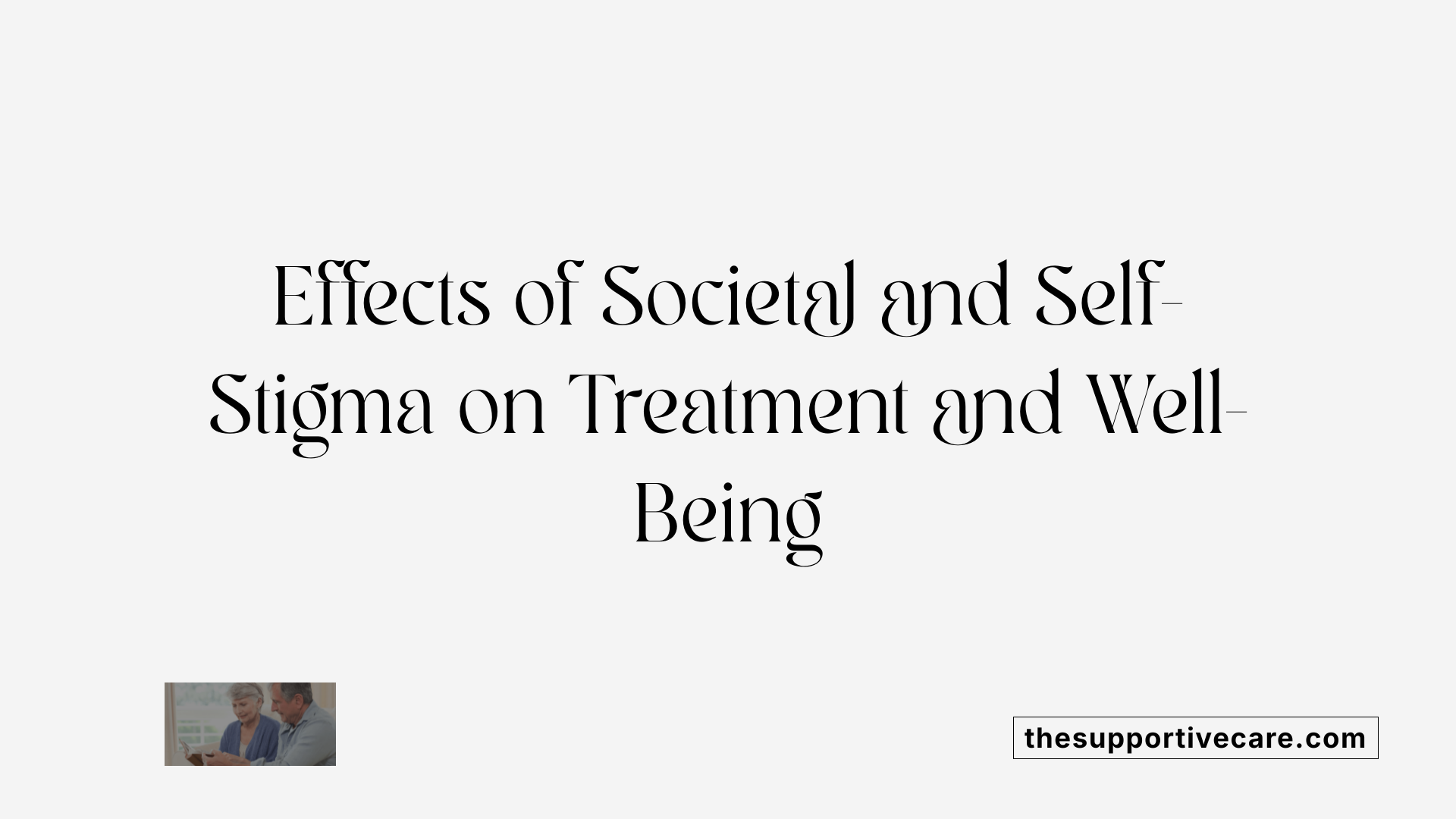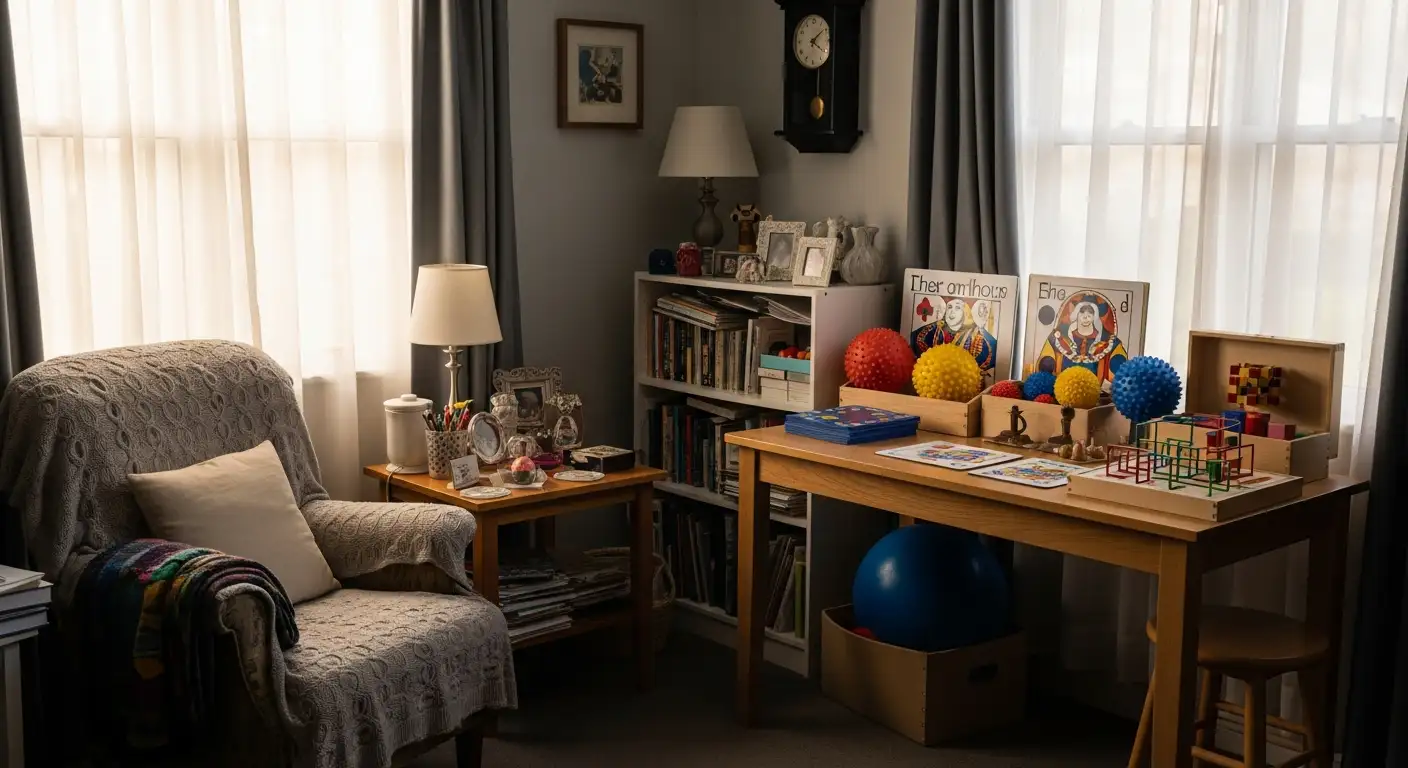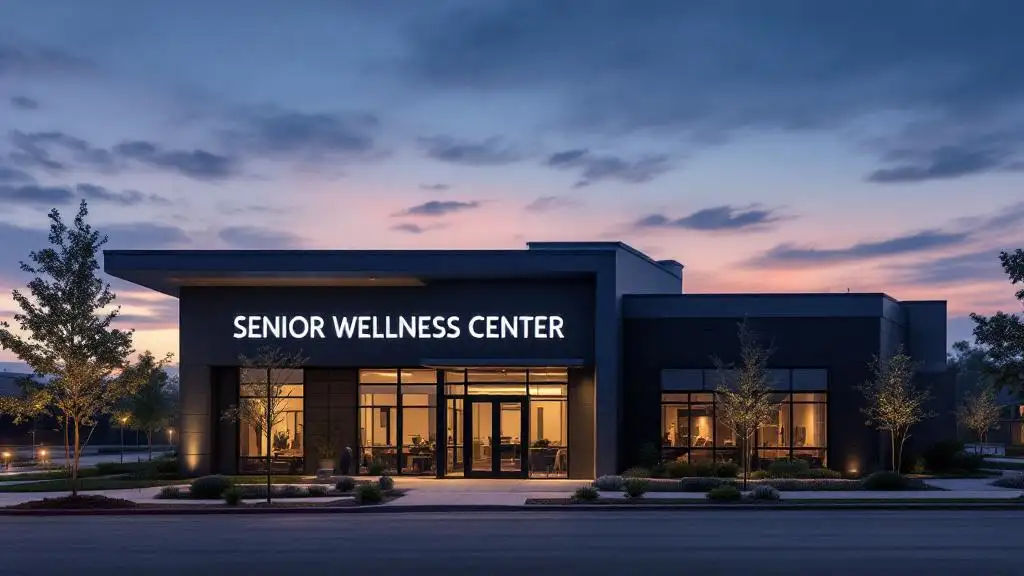Understanding the Impact of Stigma on Older Adults' Mental Wellness
As the global population ages, mental health issues among older adults are increasingly coming into focus. Despite the prevalence of conditions like depression, anxiety, and dementia, stigma remains a significant barrier to treatment and recovery. Addressing this stigma through targeted education, community initiatives, and culturally sensitive approaches is crucial for fostering healthier aging communities and ensuring that seniors receive the mental health support they deserve.
The Scope of Mental Health Issues in Older Adults

What is the prevalence of mental health disorders in seniors?
Mental health conditions are surprisingly common among older adults. Globally, approximately 14% of adults aged 60 and over live with a mental disorder, which significantly impacts their overall well-being and independence. In the United States alone, about 6 million seniors experience late-life depression, yet only a fraction—around 10%—actually receive treatment. These numbers suggest that many cases remain unrecognized or untreated, often due to barriers like stigma or lack of awareness.
How do mental disorders affect quality of life?
Mental health issues in older adults can greatly diminish their quality of life. Conditions like depression and anxiety are linked to increased disability, contributing to roughly 10.6% of total years lived with disability in this age group. Mental health problems often worsen with age if untreated, leading to social withdrawal, physical health decline, and loss of independence. Moreover, mental disorders such as dementia can cause cognitive decline, further impairing daily functioning.
What are common mental health conditions facing older adults?
Older adults are susceptible to various mental health challenges, including depression, anxiety, bipolar disorder, thought disorders, and dementia. These conditions can appear as physical complaints, irritability, or cognitive impairments, often mistaken for normal aging or physical ailments. Depression is especially prevalent, with signs that can be subtle or shared with other illnesses. Addressing these issues requires sensitive evaluation and community-based care strategies.
Understanding stigma and its impact
Stigma plays a major role in impeding mental health care in seniors. Public stereotypes often depict mental illness as a sign of weakness or a normal part of aging, discouraging help-seeking. Internalized stigma, where individuals accept these negative beliefs about themselves, is particularly harmful. For example, a study highlighted that African American older adults tend to internalize stigma more and have less positive attitudes toward treatment compared to White seniors.
Furthermore, stigma often leads to delayed diagnosis and treatment, social exclusion, and reduced adherence to treatment regimens. This is compounded by misconceptions that mental health issues are untreatable or solely a matter of willpower. Overall, reducing stigma is essential in improving access and quality of care for seniors.
Strategies to improve mental health support
Promoting mental well-being in older adults involves measures like reducing financial insecurities, strengthening social connections, and encouraging healthy behaviors. Community-based programs, peer support networks, and culturally sensitive education campaigns are effective. Training healthcare professionals to recognize mental health symptoms early and to provide respectful, stigma-free care is also crucial.
In conclusion, mental health issues in the elderly are widespread and seriously impact their lives. Tackling stigma, increasing awareness, and developing age-appropriate, community-focused care solutions are vital steps toward better mental health outcomes for seniors.
| Aspect | Description | Additional Details |
|---|---|---|
| Prevalence | 14% of adults over 60 have mental disorders | Includes depression, anxiety, dementia |
| Impact | 10.6% of disability in seniors | Affects quality of life and independence |
| Conditions | Depression, anxiety, bipolar, dementia | Symptoms often misdiagnosed or overlooked |
| Stigma Effect | Hinders help-seeking | Increased shame, delayed treatment |
| Strategies | Community support, education, professional training | Reduces stigma, improves access |
The Stigma Landscape and Its Consequences

What is mental health stigma and how does it affect older adults?
Mental health stigma refers to societal stereotypes, prejudice, discrimination, and negative beliefs surrounding mental illnesses. This stigma can be public, self-directed (internalized), or systemic.
In older adults, stigma is a significant barrier to seeking mental health care. Many seniors associate mental health issues with shame or weakness, viewing mental illness as a private matter rather than a treatable condition. Societal attitudes often dismiss mental health problems as a normal part of aging, which discourages help-seeking.
This stigma manifests in various forms, including public stereotypes portraying individuals with mental health issues as dangerous or responsible for their condition. Self-stigma involves internalizing these negative beliefs, leading to feelings of shame, isolation, and reluctance to access services.
Effects of stigma on treatment-seeking behavior
Stigma strongly influences whether older adults seek help for mental health concerns. High levels of public and internalized stigma result in delayed diagnosis, untreated symptoms, and reduced adherence to treatment.
Research indicates that many seniors with depression or anxiety do not seek professional assistance due to fears of judgment, shame, or being perceived as a burden. This reluctance can exacerbate mental health difficulties and increase morbidity.
Further, stigma affects the perception of mental health services’ effectiveness, causing skepticism and resistance toward interventions. Financial concerns and negative experiences with healthcare professionals, compounded by stigma, further hinder treatment initiation.
Cultural and societal influences on stigma
Cultural beliefs play a critical role in shaping attitudes toward mental health. In some cultures, mental illness is viewed as a sign of divine punishment, family shame, or supernatural affliction, affecting help-seeking behaviors.
Societal norms also influence stigma differently across age groups and ethnic communities. For example, African American older adults tend to internalize stigma more and harbor less positive attitudes toward mental health treatment compared to White peers. Hispanic seniors often show higher psychological distress but also perceive mental health treatments as less effective.
Gender, education, and socioeconomic status intersect with cultural factors to shape stigma experiences. Women and individuals with lower education levels may face different pressures and beliefs about mental health.
Efforts to reduce stigma include culturally sensitive awareness campaigns, community education, and promoting mental health literacy. Tailored messaging that respects cultural nuances can help dispel myths, increase understanding, and encourage treatment engagement.
| Aspect | Impact | Cultural Variations |
|---|---|---|
| Public stigma | Stereotyping, discrimination | Varies with community beliefs and media portrayals |
| Self-stigma | Feelings of shame, withdrawal | Influenced by cultural norms about privacy and mental health |
| Treatment perceptions | Skepticism or mistrust | Affected by cultural beliefs about mental illness and therapy |
Addressing stigma requires comprehensive approaches, combining policy reforms, education, community engagement, and culturally competent care, aiming to foster an environment where older adults feel supported to seek help without fear of judgment.
Strategies to Reduce Stigma in Older Populations

What are effective strategies to reduce mental health stigma in older populations?
Reducing mental health stigma among older adults requires a comprehensive approach that addresses societal attitudes and individual beliefs. One effective tactic involves establishing community support programs, such as peer-led support groups, community workshops, and safe spaces where seniors can openly discuss mental health issues without fear of judgment. These initiatives help normalize mental health concerns and encourage help-seeking.
In addition to community programs, public educational campaigns and media involvement play a crucial role. These efforts include sharing positive stories of recovery, promoting accurate information about mental health aging, and challenging stereotypes depicted in media portrayals. When communities see relatable examples of seniors managing mental health successfully, it fosters greater acceptance.
Integrating mental health services into primary care settings can significantly reduce barriers to treatment. When mental health care is accessible within familiar healthcare environments, seniors are more likely to seek help. Training healthcare providers to recognize and address mental health issues sensitively and effectively makes a tangible difference.
Further, fostering social connectedness through intergenerational programs promotes empathy and understanding across age groups. Activities that bridge generations can dispel misconceptions by encouraging meaningful interactions, which can reduce societal stereotypes.
Addressing internalized stigma directly is also vital. Psychosocial interventions, such as counseling or self-help strategies, empower older adults to challenge their negative beliefs about mental health. Caregivers and healthcare staff can receive specialized training to create supportive environments that motivate treatment engagement.
Overall, combining these strategies—community involvement, media engagement, integrated healthcare, and social engagement—offers a robust framework to combat stigma and support mental well-being in older populations.
| Strategy | Example Activities | Goals |
|---|---|---|
| Community Support Programs | Support groups, workshops, safe discussion spaces | Normalize mental health issues, facilitate peer support |
| Educational Campaigns & Media | Public stories, awareness campaigns, media portrayals | Dispelling myths, changing societal perceptions |
| Service Integration | Mental health embedded in primary care clinics | Improve access and reduce help-seeking barriers |
| Peer and Intergenerational Support | Mentorship programs, community activities | Enhance empathy, reduce stereotypes |
Addressing mental health stigma among older adults is an ongoing effort that benefits from community engagement, education, accessible services, and social connection. These combined efforts create an environment where seniors feel valued and supported in managing their mental health.
The Role of Education and Awareness Campaigns
What educational approaches can help increase awareness and understanding of mental health stigma among seniors?
Raising awareness and reducing mental health stigma among older adults requires targeted educational strategies. Psychoeducation plays a vital role, involving sessions such as lectures, seminars, and multimedia resources that present factual, easy-to-understand information about mental health conditions. These approaches aim to correct common misconceptions and dispel myths that mental illness is a normal part of aging or a sign of personal weakness.
In addition to providing factual knowledge, contact-based interventions are highly effective. Sharing personal stories from individuals with lived experience helps foster empathy, challenge stereotypes, and normalize mental health issues. When seniors hear positive recovery stories or learn about others’ journeys, they are more likely to consider seeking help.
Interactive activities also play a crucial part in changing attitudes. Role-plays, myth-busting sessions, and case vignette discussions enable seniors to actively engage with mental health topics, question prejudices, and develop more compassionate perspectives.
Community programs and peer support groups further contribute by creating spaces for social connection and shared learning. Incorporating arts, music, and leisure activities into these initiatives promotes mental well-being and reduces feelings of shame or isolation.
Effective campaigns often combine multiple approaches—educational sessions, social contact, and community engagement—to create a comprehensive strategy. The goal is to make mental health education accessible, relatable, and culturally sensitive.
Sustained efforts that utilize a variety of platforms and formats are most likely to succeed. When older adults are equipped with accurate knowledge and empathetic understanding, they are more inclined to seek help early, leading to better mental health outcomes.
Community and Media Campaigns Making a Difference
Community efforts play a vital role in reducing mental health stigma among older adults. Several initiatives focus on creating supportive environments where seniors feel comfortable discussing their mental health issues and seeking help.
One notable example is the "Let’s Talk About It" campaign, which directly addresses the stigma surrounding mental health and suicide among seniors. This campaign promotes open conversations by encouraging community members and seniors themselves to share experiences, challenge misconceptions, and seek support without shame.
Another significant program is run by Boston University's Center for Aging & Disability Education & Research (CADER). They have developed a variety of resources, including workshops, media campaigns, and online training modules aimed at increasing mental health literacy. These efforts help seniors and caregivers recognize symptoms early, reduce social isolation, and foster understanding about mental health conditions.
In addition, New York State’s Master Plan for Aging includes targeted campaigns to combat stigma related to aging with HIV and within the LGBTQ+ community. These campaigns emphasize community education, peer support, and destigmatization initiatives tailored to specific cultural and social groups.
Media and online programs are also essential tools. Educational videos, social media outreach, and virtual town halls provide accessible platforms for seniors and their families to learn about mental health, share stories, and find community support.
Moreover, peer support networks offer trusted spaces where older adults can talk openly about their mental health challenges. These networks reduce feelings of isolation, foster resilience, and demonstrate that recovery is possible.
In summary, community-driven campaigns, media outreach, and peer networks collectively contribute to breaking down misconceptions, encouraging help-seeking, and promoting mental well-being among older adults.
Cultural Beliefs, Societal Factors, and Their Influence
Understanding how cultural and societal factors influence mental health stigma among older adults is crucial for developing effective interventions.
Cultural perceptions of mental illness vary widely across different communities. In many cultures, mental health issues are viewed through supernatural or spiritual lenses, which can lead to misconceptions and prejudice. For example, some African societies may interpret mental illness as a punishment from divine forces or spirits, resulting in social exclusion and reliance on traditional healers rather than medical treatment.
Similarly, in many Asian cultures, mental health problems are often seen as family shame or dishonor. This cultural shame discourages open discussion about mental health and often delays seeking professional help, thereby exacerbating conditions such as depression or anxiety.
Societal norms and gender roles also play a significant role in shaping attitudes toward mental health. Societies with rigid gender expectations may stigmatize mental illness more heavily based on gender. For example, men might avoid admitting they have mental health issues due to beliefs that seeking help is a sign of weakness, while women may face judgment for emotional difficulties, being labeled as excessively fragile or unstable.
Challenges in developing countries are particularly acute. Limited awareness and understanding of mental health conditions, coupled with scarce mental health services, create significant barriers for the elderly. Many rely on traditional healing practices or community-based approaches, which may not always align with evidence-based treatments. Furthermore, the pervasive stigma around mental health prevents many older adults from seeking necessary care, leading to untreated conditions that worsen over time.
Overall, these cultural and societal attitudes are deeply rooted and influence how mental health is perceived and treated among seniors worldwide. Addressing these misconceptions requires culturally sensitive education, community engagement, and policy efforts tailored to the specific norms and beliefs of each population.
Addressing Disparities and Promoting Equity in Mental Health Care
Racial and ethnic disparities in stigma and help-seeking
Research shows that racial and ethnic background significantly influence attitudes toward mental health treatment among older adults. For example, African American seniors tend to internalize less public stigma and often hold more accepting views about mental health care compared to their White counterparts. Conversely, Hispanic older adults exhibit higher levels of psychological distress but harbor more negative perceptions about the effectiveness of mental health services. These differences highlight the importance of understanding cultural nuances that shape stigmatizing beliefs.
Perceived public stigma is generally high across diverse groups, but its impact varies by race. Internalized stigma, or self-stigma, is particularly pronounced among African American elders, which can lead to reluctance in seeking help. This internalized stigma partly explains disparities in treatment engagement and mental health outcomes among minority populations.
Tailored interventions for minority populations
Addressing mental health disparities requires culturally sensitive strategies tailored to the unique needs of minority older adults. Initiatives like community outreach programs that include testimonies from peers with lived experiences can demystify mental health issues and combat internalized stigma.
Educational campaigns must respect cultural beliefs and languages to be effective. For example, in communities where mental illness is viewed through supernatural or familial lenses, interventions should incorporate spirituality and family engagement.
Training healthcare providers in cultural competency is crucial. This prepares them to recognize specific barriers faced by minority elders, such as language hurdles or mistrust towards healthcare systems, and to provide respectful, inclusive care.
Policy recommendations for inclusive mental health services
To promote equity, policies must prioritize accessible, inclusive mental health services. Funding should support community-based mental health programs, especially in underserved neighborhoods, and expand telehealth options to reach rural or mobility-limited seniors.
Legislation should also focus on reducing structural barriers, such as cost and lack of insurance coverage, which disproportionately affect minority populations. Integrating mental health screening and services into primary care can improve early detection and treatment, especially when culturally adapted.
Furthermore, fostering partnerships among community organizations, healthcare providers, and policymakers can help develop comprehensive approaches tailored to diverse populations. Such collaborations are vital in creating supportive environments where all older adults feel valued and understood.
| Aspect | Action Items | Explanation |
|---|---|---|
| Cultural Sensitivity | Train healthcare providers in cultural competence | Ensures respectful, understanding care tailored to cultural beliefs |
| Outreach and Education | Develop community-specific awareness campaigns | Addresses myths and stigma pertinent to particular communities |
| Policy and Funding | Increase support for community-based and telehealth services | Enhances access in underserved and rural areas |
| Systemic Barriers | Remove cost and insurance hurdles | Facilitates easier access to mental health care for minority elders |
| Community Collaboration | Partner with local organizations | Builds trust and integrates services into familiar settings |
Applying such targeted strategies can bridge gaps in mental health care, ensuring that older racial and ethnic minorities receive the support they need for healthier aging.
The Future of Mental Health and Aging
Emerging trends and innovative approaches
As the global population continues to age, the approach to senior mental health is evolving rapidly. New interventions emphasize community-based care, mental health literacy, and destigmatization efforts. Programs are increasingly tailored to cultural and individual needs, recognizing that attitudes toward mental illness vary across communities.
Technology and telehealth solutions
Advancements in technology are transforming mental health support for older adults. Telehealth services provide accessible, convenient care, especially for those with mobility issues or in remote areas. Digital platforms, apps, and virtual counseling help overcome traditional barriers like cost and stigma, encouraging earlier engagement with mental health resources.
The importance of ongoing research and policy support
Research remains vital for understanding specific mental health needs of seniors, especially regarding internalized stigma and cultural factors. Policymakers are increasingly recognizing the importance of integrated care, which combines primary and mental health services. Investment in policy reforms, training healthcare providers, and community outreach programs are crucial to ensure that the mental health system adapts to demographic changes.
| Approach | Focus Area | Expected Impact | Additional Details |
|---|---|---|---|
| Community-based programs | Culturally tailored services | Reduce stigma, increase access to care | Focus on local engagement and education |
| Digital and telehealth | Use of technology | Improve accessibility and convenience | Especially vital during pandemic times |
| Research and policy reform | Evidence-based strategies | Decrease disparities and enhance treatment effectiveness | Continuous evaluation needed |
Preparing for the future involves integrating these strategies to create a more inclusive, accessible, and stigma-free environment for older adults seeking mental health support.
A Path Forward for Inclusive Elder Mental Health Care
Addressing mental health stigma among older adults is an urgent priority as the global population ages. Through comprehensive community support, education, culturally sensitive approaches, and policy reforms, we can dismantle barriers that prevent seniors from seeking help. Promoting open conversations and fostering empathy across generations will not only improve individual well-being but also create healthier, more inclusive societies where aging with dignity and mental wellness is an achievable reality for all.
References
- Mental health of older adults - World Health Organization (WHO)
- Mental Health Treatment Seeking Among Older Adults with ...
- Barriers and facilitators of older adults for professional mental health ...
- Destigmatizing Mental Health Issues in Seniors
- Understanding and Addressing Mental Health Stigma Across ...
- Mental Health Stigma: Changing the Conversation
- Speak Up to Reduce Stigma - E4 Center
- Older Adults Are Being Overlooked When it Comes to Mental Heath ...



































































































